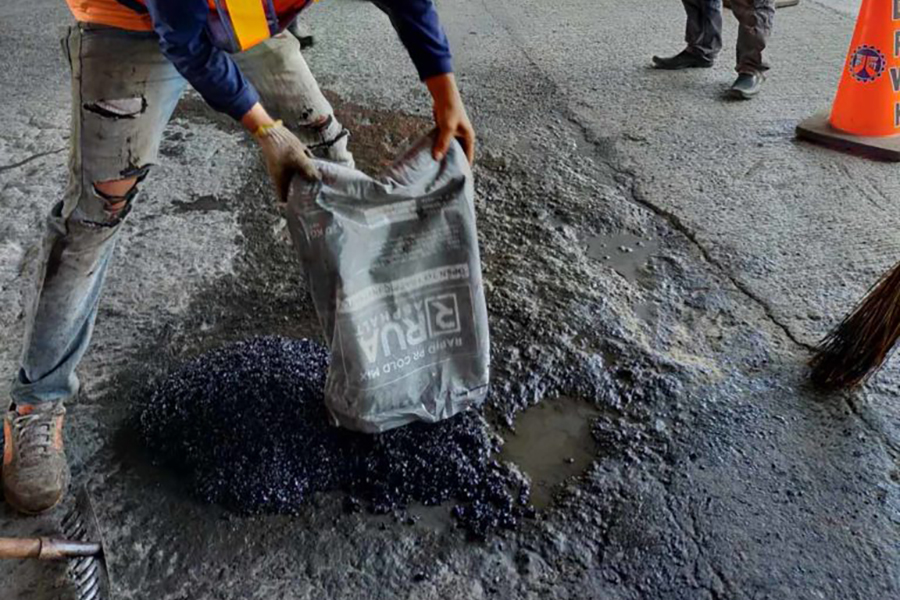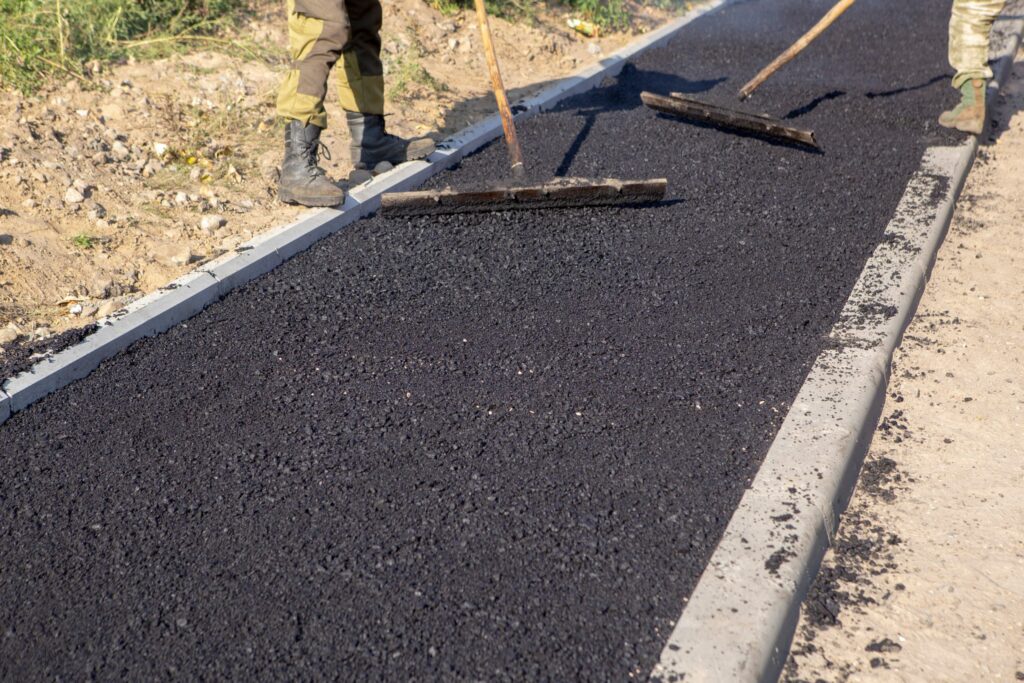Asphalt is a black, sticky substance that is most commonly used for paving roads and other flat surfaces. It is made up of a mix of stone, sand, and bitumen, which is a type of petroleum product. Asphalt is very durable and weather-resistant, which makes it an ideal material for paving.
There are two types of asphalts that you can choose from. If you have a project that requires asphalt, you should know the difference between its two kinds: cold mix and hot mix asphalt. Being aware of the differences between these materials will allow you to make the right decision for your project.
What is Cold Mix Asphalt?
Cold mix asphalt is a material that is made up of a combination of emulsified or cutback asphalts, aggregate, and water. It does not require heating and can be applied to the surface straight from the bag without the use of heavy equipment.
This kind of asphalt can be used for cold patch repair projects. This involves the process of repairing minor potholes or cracks in pavements. Cold patch asphalt is also used to prevent minor damages from spreading and turning into larger cracks or potholes.

Pros of Cold Mix Asphalt
Using cold mix asphalt for your project can provide you with the following benefits:
Affordable
Cold mix asphalt is cheaper to use compared to hot mix asphalt. This is because it does not require the use of heavy equipment and can be applied straight from the bag. All you need is your manpower and the basic tools needed to apply the cold mix asphalt.
Easy to Use
Cold mix asphalt is very easy to use. You can simply pour it into the pothole or crack that you want to repair and level it off with a shovel. Then, all you need to do is wait for it to dry and harden.
Because it’s simple to apply, you also don’t need to hire a professional to do it for you. Anybody can do it as long as they have the right tools and enough training.
No Need for Heating
Cold mix asphalt doesn’t require heating, unlike hot mix asphalt. This means that you don’t need to use any dangerous equipment that uses fire or flames. Therefore, it’s much safer to work with.
Using cold patch asphalt for your project also allows you to save more time. You don’t need to wait for the material to heat up before you can start working with it.
Cons of Cold Mix Asphalt
Despite its many benefits, cold mix asphalt also has a few drawbacks that you should be aware of. These are the following:
Shorter Shelf Life
Cold mix asphalt has a shorter shelf life than hot mix asphalt. This means that you need to use it within a certain time frame or else it will harden and become unusable. Once it hardens, you can’t do anything to make it soft again.
This can be a problem if you’re working on a large project that will take some time to finish. You need to make sure that you have enough cold mix asphalt to last you throughout the project.
Not as Strong
Cold patch asphalt is not as strong as hot mix asphalt. This means that it’s not ideal for projects that require a very durable surface. It’s more suitable for repairing minor damages since it will only last for a short period.
What is Hot Mix Asphalt?
Hot mix asphalt is made up of a combination of aggregate and bitumen. The aggregate is heated until it reaches a temperature between 150 to 200 degrees Celsius. Once it reaches the desired temperature, the aggregate is mixed with the bitumen.
After being mixed, the material is then placed on the surface that needs to be paved. It’s compacted using a heavy roller until it has cooled and hardened.

Pros of Hot Mix Asphalt
Using hot mix asphalt for your project can provide you with the following benefits:
Strong and Durable
Hot mix asphalt is stronger and more durable than cold mix asphalt. This is because the aggregate is heated before being mixed with the bitumen. The heat makes the material more pliable, so it can better adhere to the surface.
Longer Shelf Life
Hot mix asphalt has a longer shelf life than cold patch asphalt. This means that you can store it for a longer period without it hardening. This is very convenient if you’re working on a large project that will take some time to finish.
You don’t need to worry about the material hardening before you can use it. You can simply store it until you’re ready to use it.
Cons of Hot Mix Asphalt
Despite its benefits, hot mix asphalt also has a few disadvantages that you should know. These are the following:
Requires Specialized Equipment
Hot mix asphalt needs to be heated before it can be used. This means that you need specialized equipment to heat the material. The most common type of equipment used is a drum mixer.
This piece of equipment is very expensive, so not all contractors will have it. If you’re planning on using hot mix asphalt for your project, make sure that the contractor you hire has the necessary equipment.
Dangerous to Work With
Hot mix asphalt is dangerous to work with since it needs to be heated before it can be used. This means that you need to use equipment that uses fire or flames. If you’re not careful, you could easily get injured.
Make sure that you take the necessary precautions when working with hot mix asphalt. Wear protective gear and make sure that there is sufficient ventilation so that you don’t inhale any fumes.
Choosing between cold mix and hot mix asphalt depends on your priorities and the specific requirements of your project. If you need a strong and durable surface, then hot mix asphalt is the better choice. However, if you’re working on a tight budget, then cold mix asphalt might be a better option.
If you need expert advice on which type of asphalt to use for your project, you can rely on us at Rua Seguridad. We have professionals who can assess your needs and recommend the best solution for you. Contact us today to learn more about what we offer.



